- Joined
- Jan 6, 2013
- Messages
- 5,574
- Reaction score
- 11,213
1. The History
Located south-east of Capel Curig, North Wales, Rhos Quarry was a large quarry pit worked for slate. It opened in the 1860s and made extensive use of waterpower. The slate was trammed via a short tunnel, but this was later opened out as a cutting to the nearby mill area. The water-powered haulage system used included an impressive 30-foot water wheel. Additionally, there was an 18-foot water wheel at the mill which, most likely, would have been used to supplement the larger wheel when the mill was expanded to nearly double its initial floor space. A drainage tunnel allowed the use of a water balance while providing a ready exit for waste. This was developed into a platform with wheel-pit, with the intention building a mill at a lower level to avoid up-haulage at some point in the future.
Annotated Old O/S map detail of the quarry:
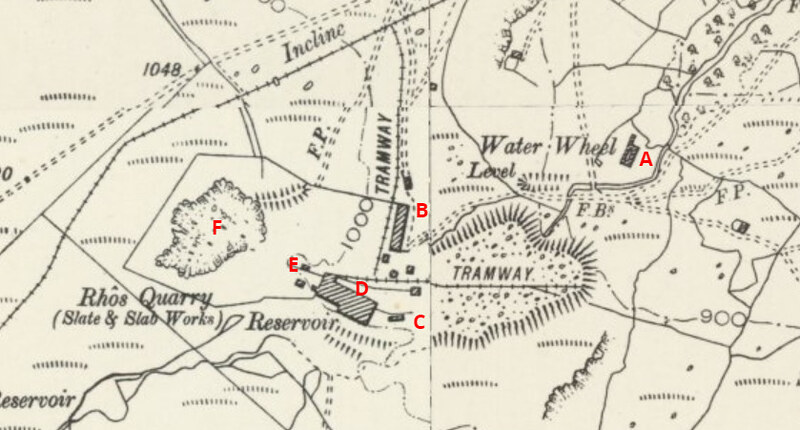
And the 30-foot waterwheel behind the main mill building:
 by HughieDW, on Flickr
by HughieDW, on Flickr
In 1935, the railed water balance was replaced with a chain incline. Powered by a water wheel running off the main mill wheel supply, some considered it more primitive than those installed in the 1860s. The mill itself housed contained 22 Greaves saws, a planer, and some mechanical dressers in the "waliau" (open-fronted workspaces). Locomotive power was used in the mill area via a De Winton engine which was operational from the 1880s up until around 1930, followed by two diesels (one a 1934 Ruston & Hornsby).
In terms of output, in 1882 45 men produced 1,285 tons of slate. In 1938 52 men were employed, before the quarry finally closed in the 1950s. Much of the quarry and its associated buildings still remain, including the mill building and associated structures and some of the water balance structure, though the incline has been quarried away.
2. The Explore
Nothing spectacular here, but interesting all the same. Think it is the first time it has been reported on here. There’s quite a bit remaining and although the buildings have started to fall down, you can get a real feel for how the quarry was laid out and how operated.
So, one very windy December morn I set of for the quarry. I parked just off the A5 and started the long steep ascent up to the quarry along a fairly well marked out footpath. The main issue was the wind and rain blowing straight into my face. Even when I’d arrived it was hard to take shelter from the wind as nothing appeared to be in the leeward side of the gale that was blowing. Ended up having an enjoyable hour or so at the quarry. Ventured into the upper reaches of the quarry only and didn’t get too close to the edge given just how windy it was! Overall, a really interesting and enjoyable little wander.
3. The Pictures
The first thing that comes into view is the lower water wheel pit (A) that was built but never used:
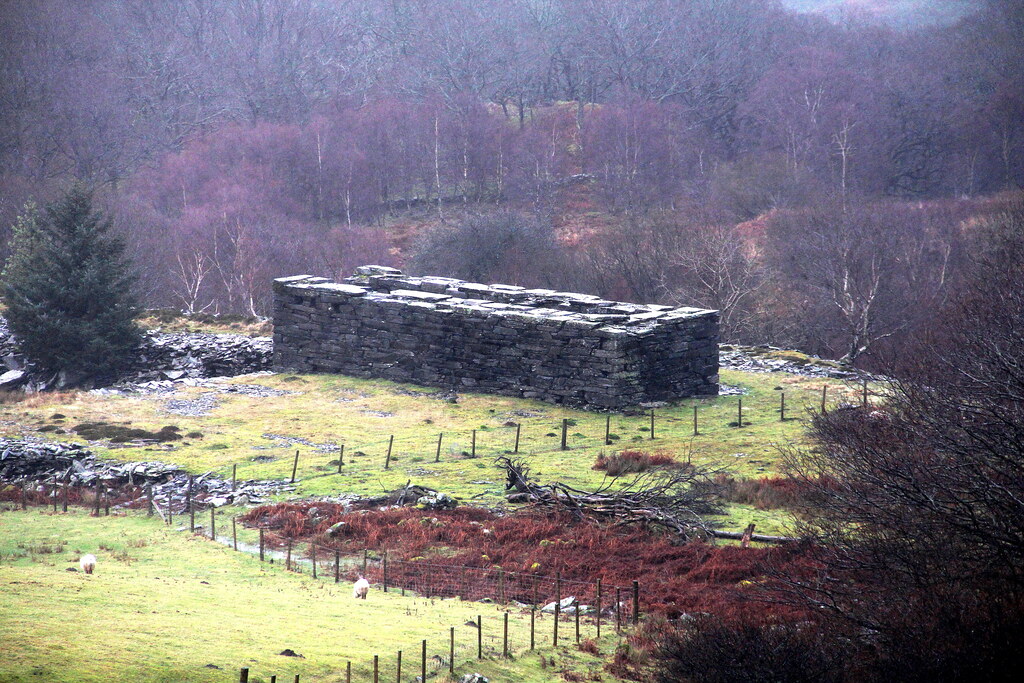
Continuing to walk along the raised exit tramway you come to a row of barracks/cottages (B):

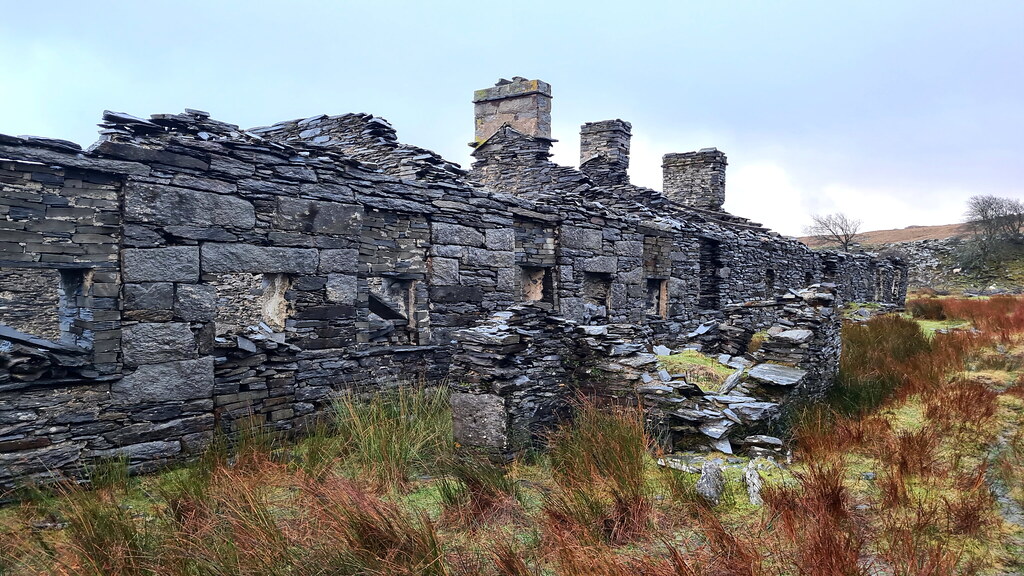
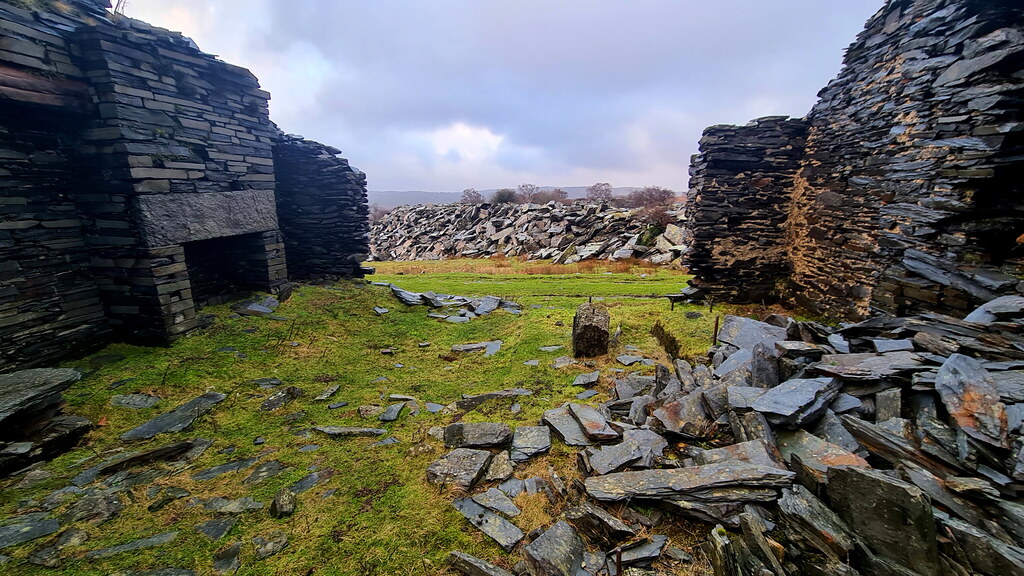
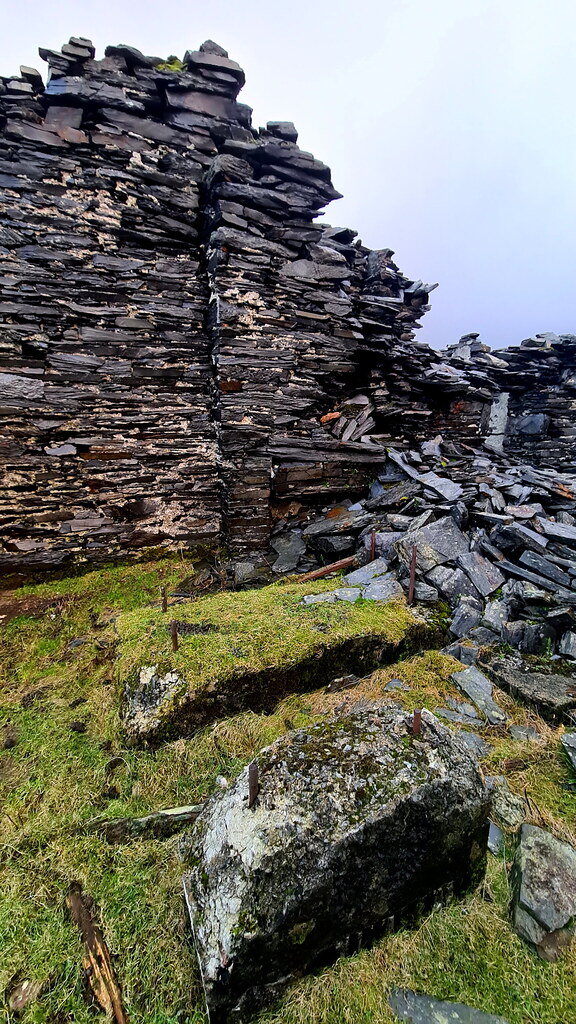
The nearby waste tips:
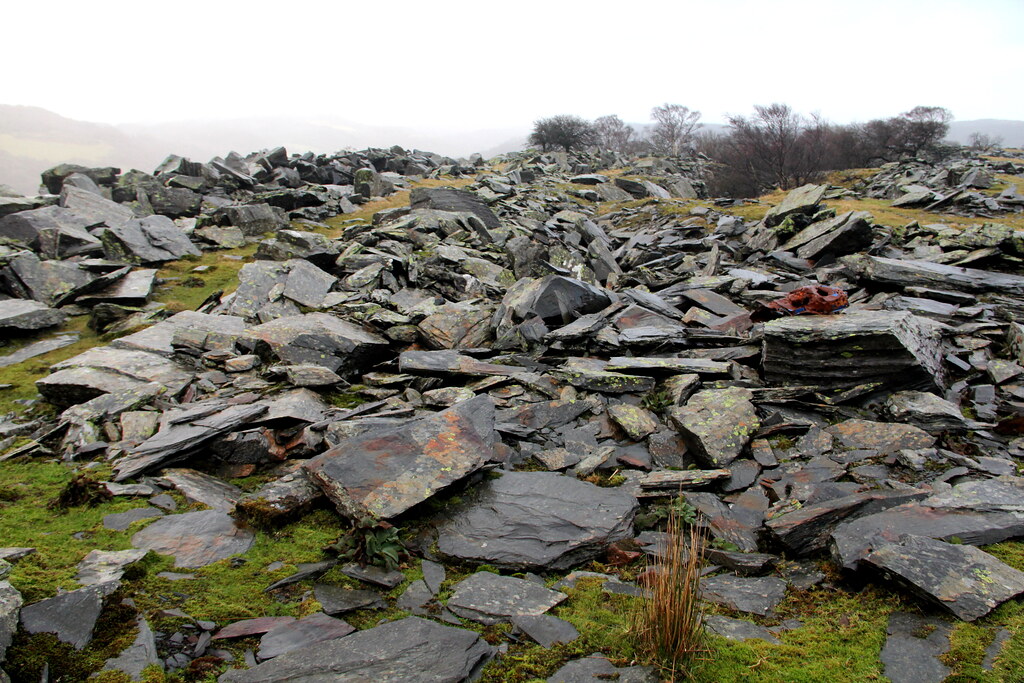
Another nearby quarry building:
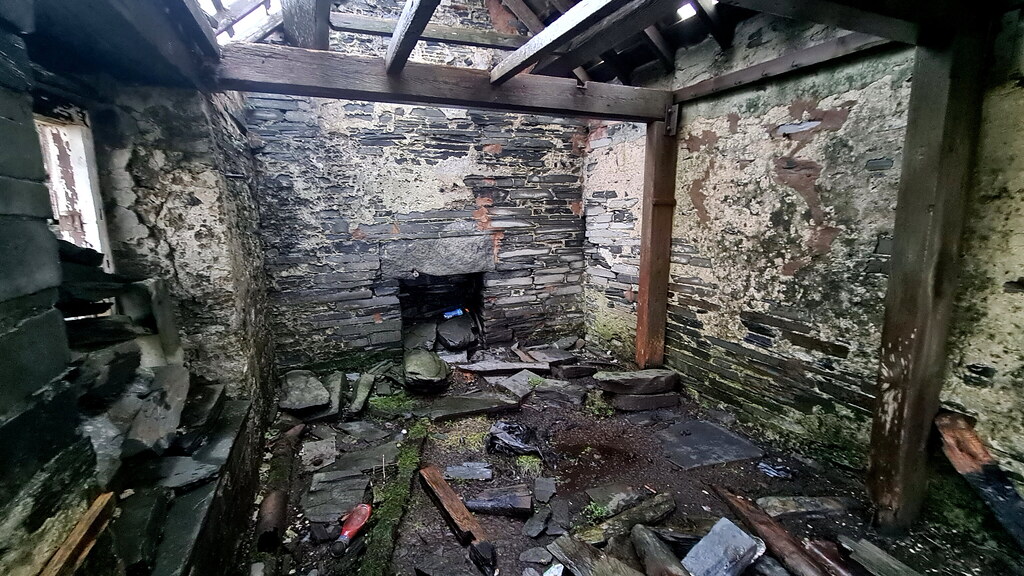
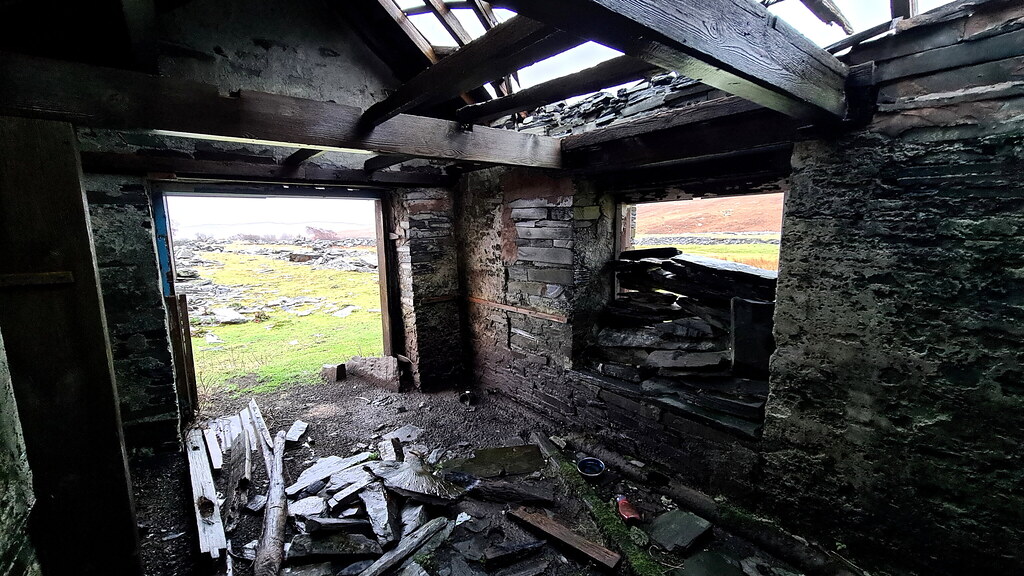
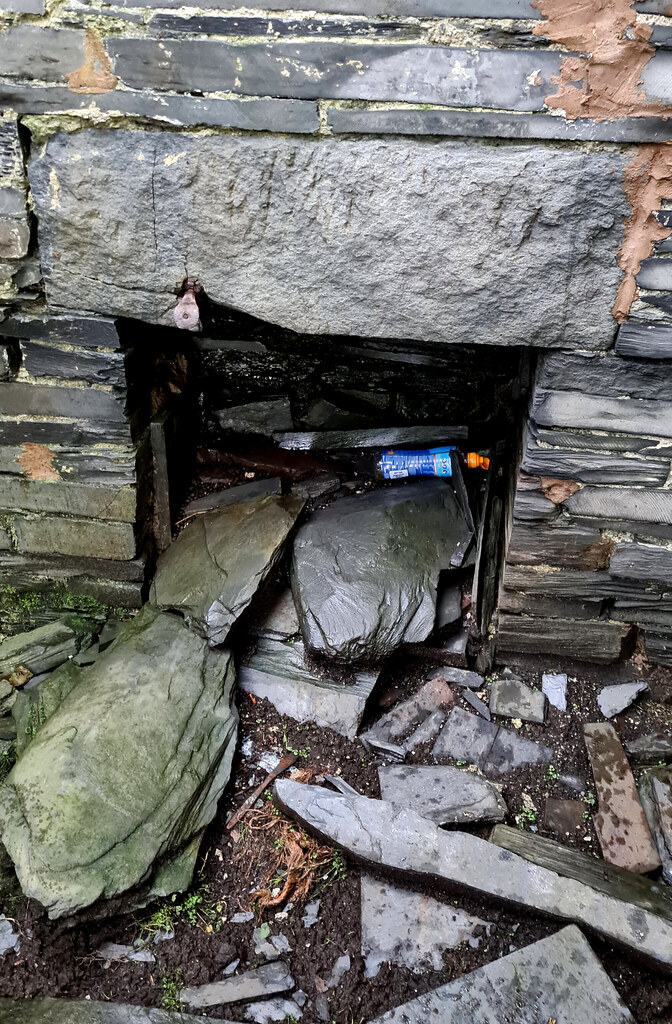
Looking over to the mill (D):
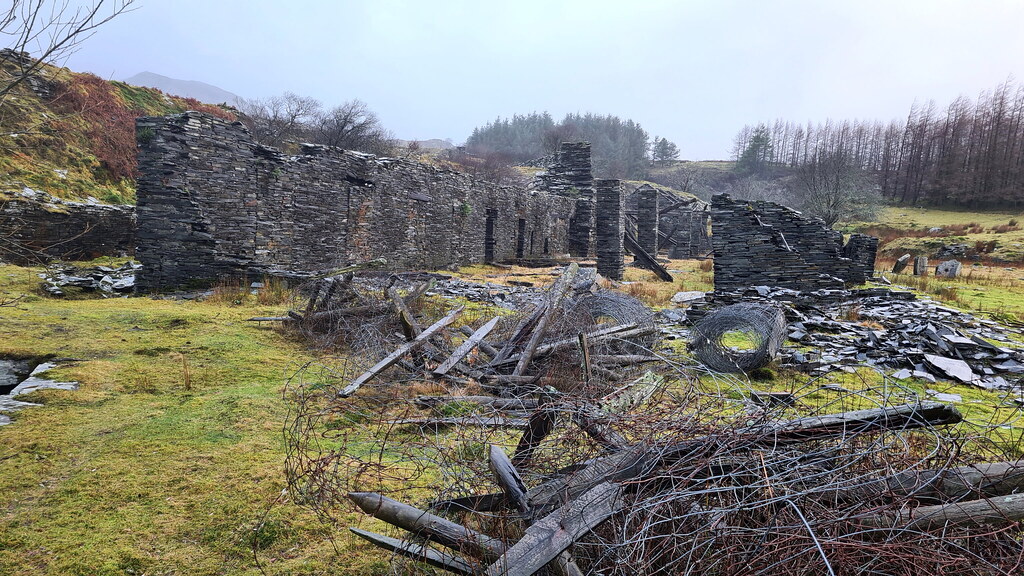
And to the rear of the mill:
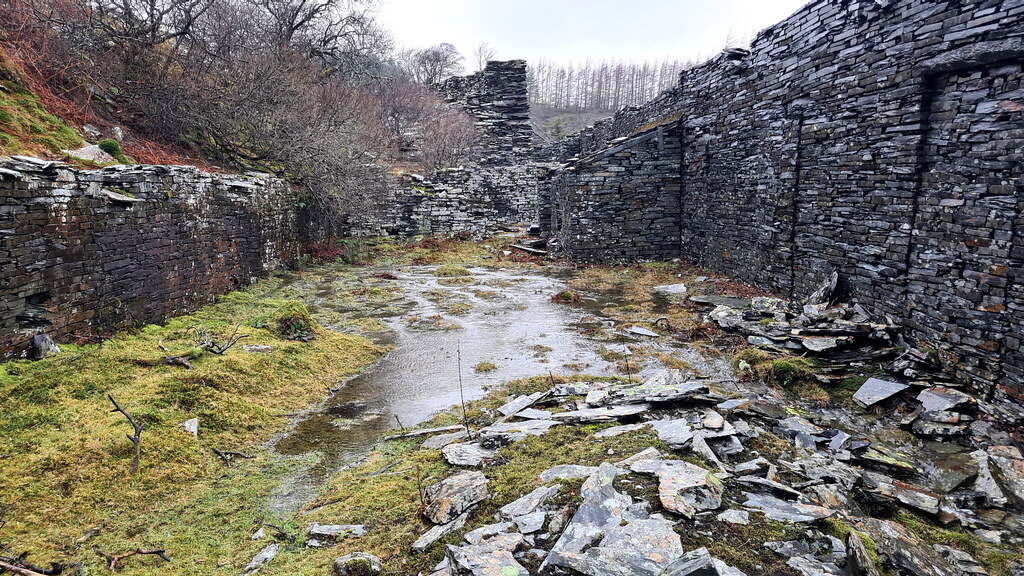

East of the mill is this neat stone channel that runs from the mill’s tail race to the southern edge of the tip:
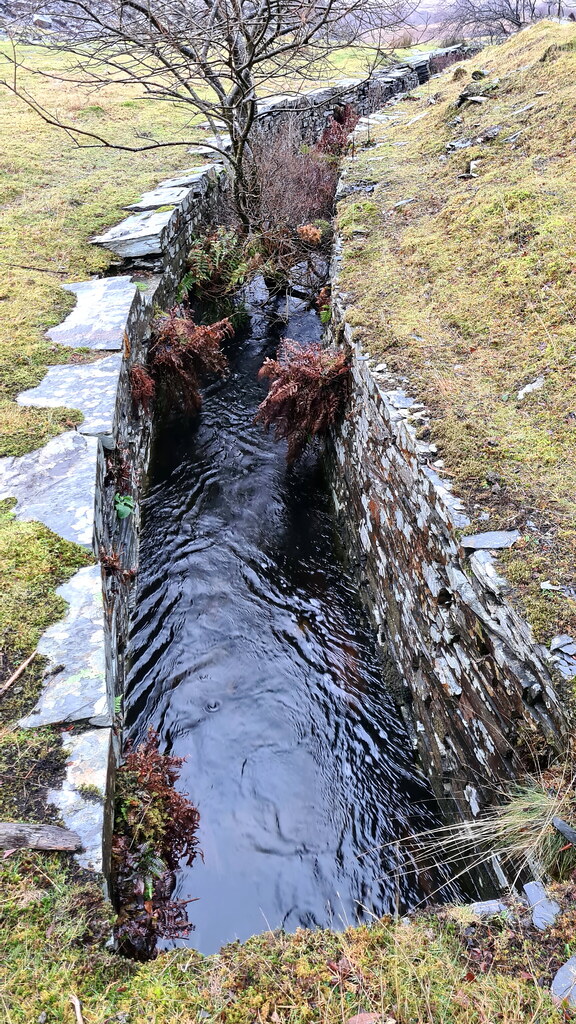
At the end is a second, smaller water wheel pit:
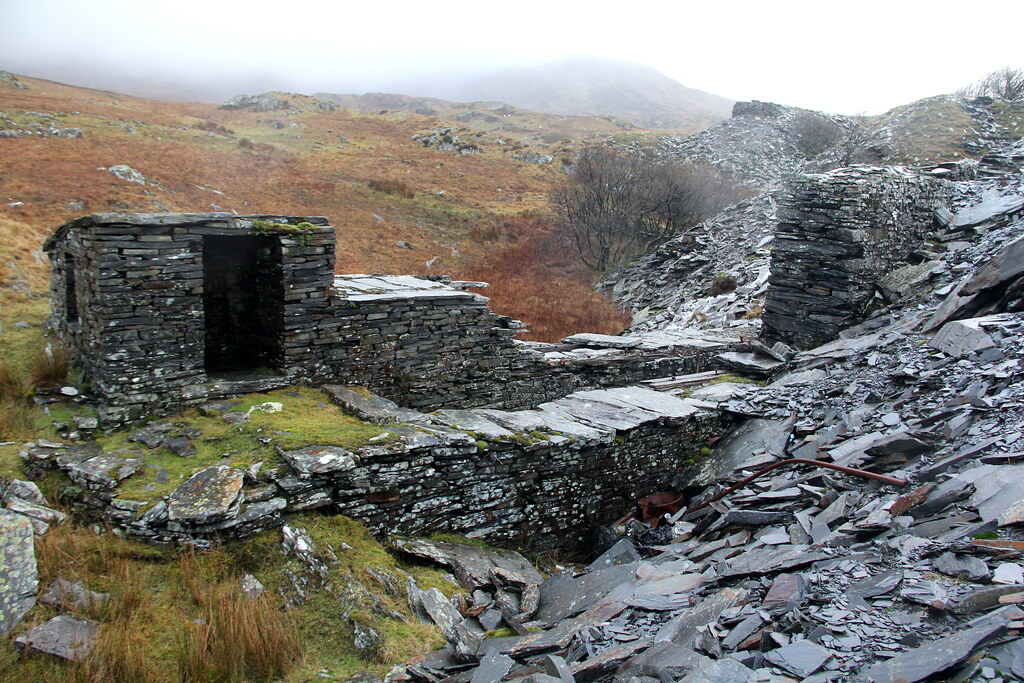
Back up to the mill:
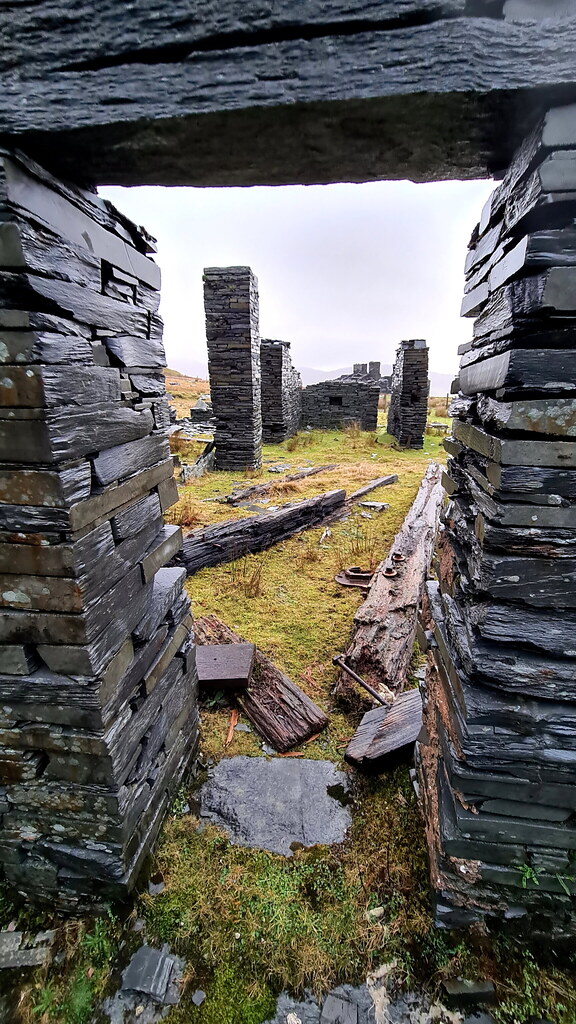
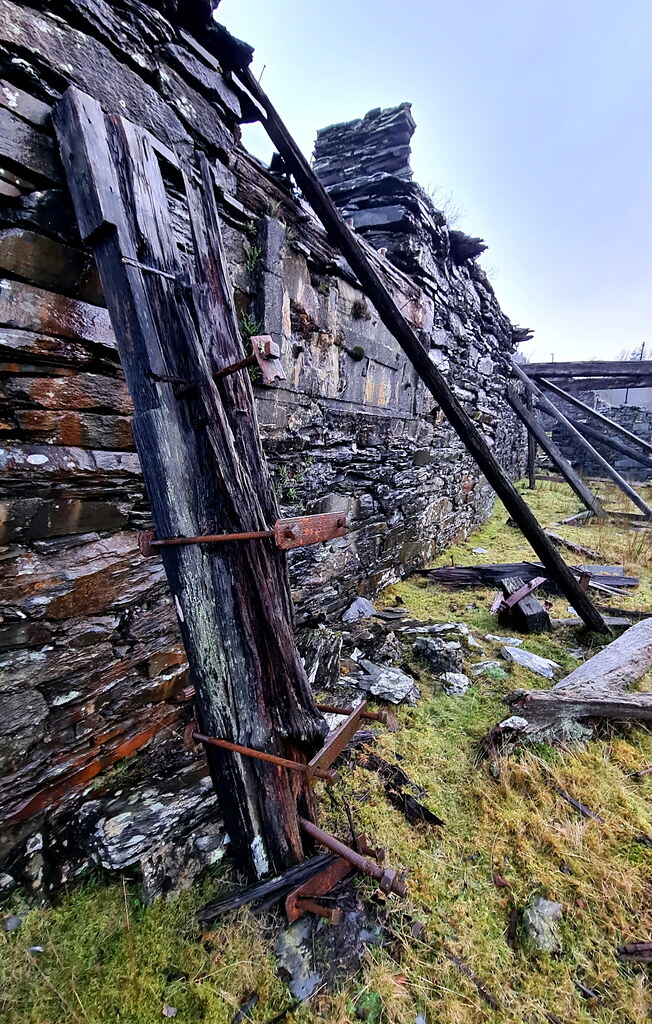
One of the many rotting roof beams:
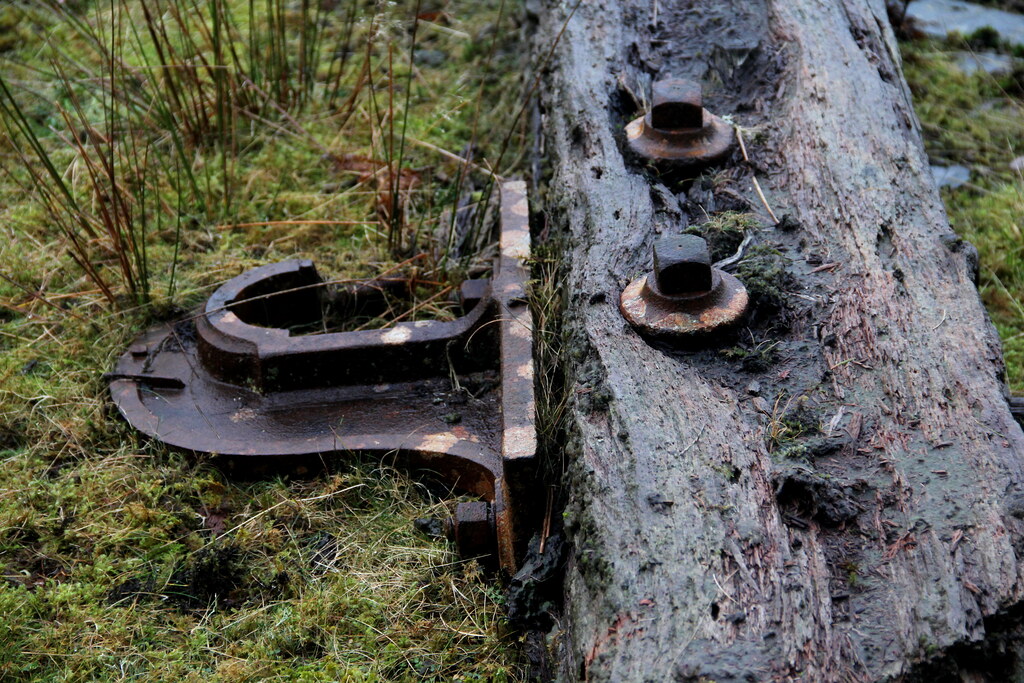
This looks like an engine mounting block:
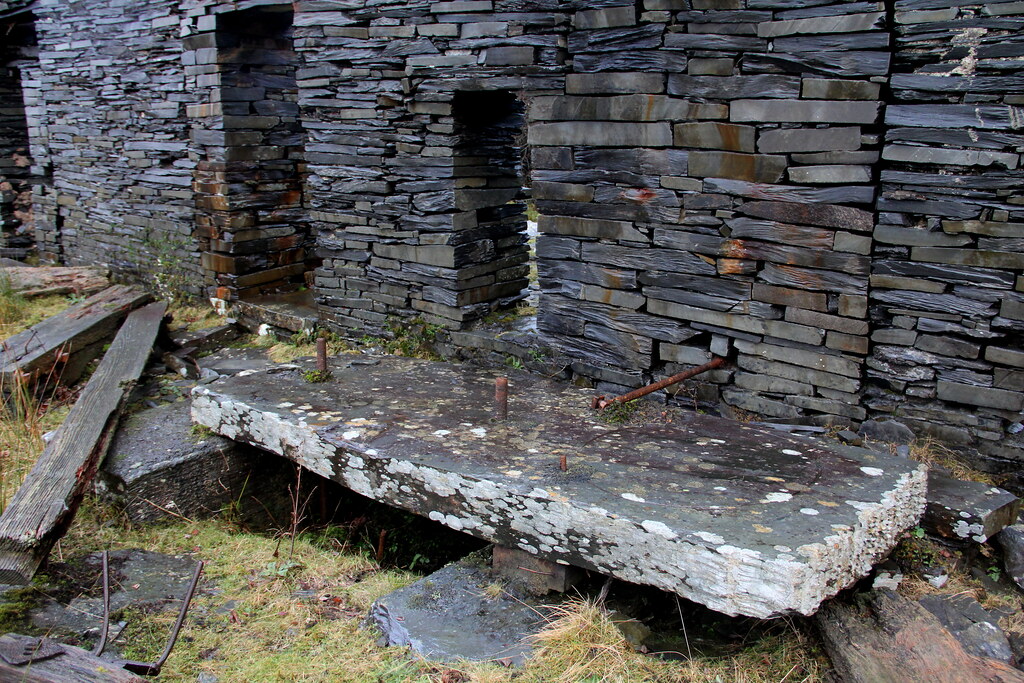
Defying gravity:
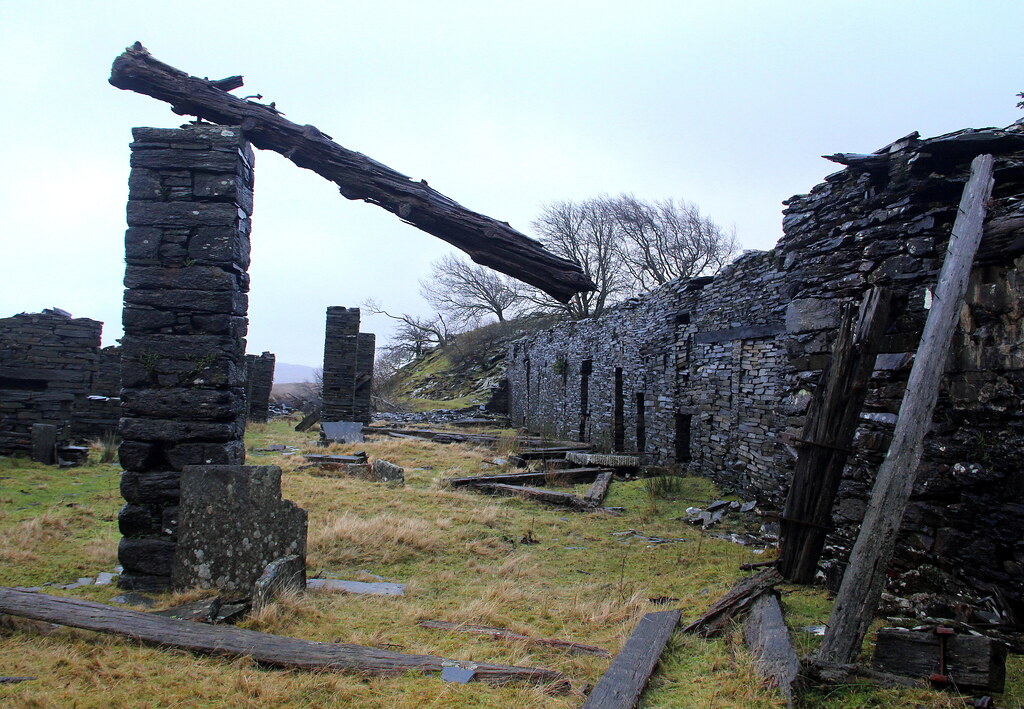
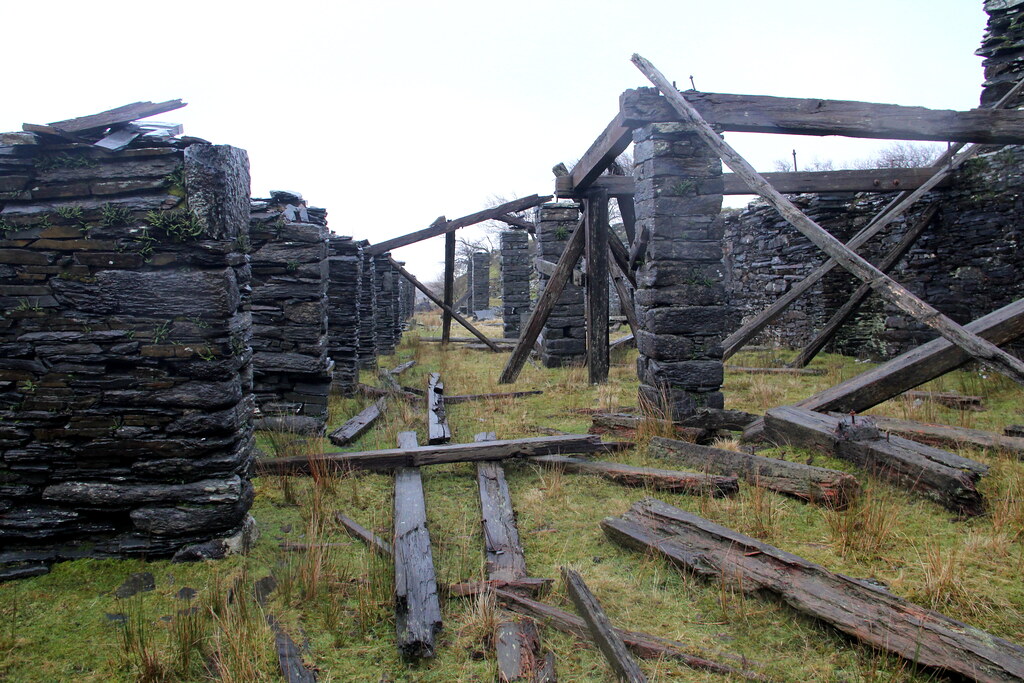
On the quarry side of the mill is this building which was, most likely, the quarrymen’s caban:
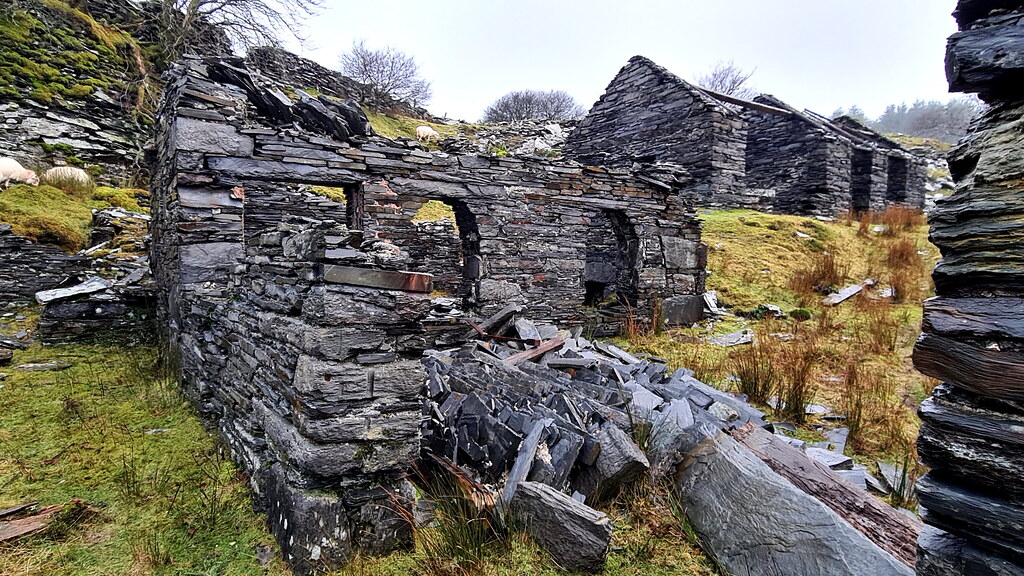
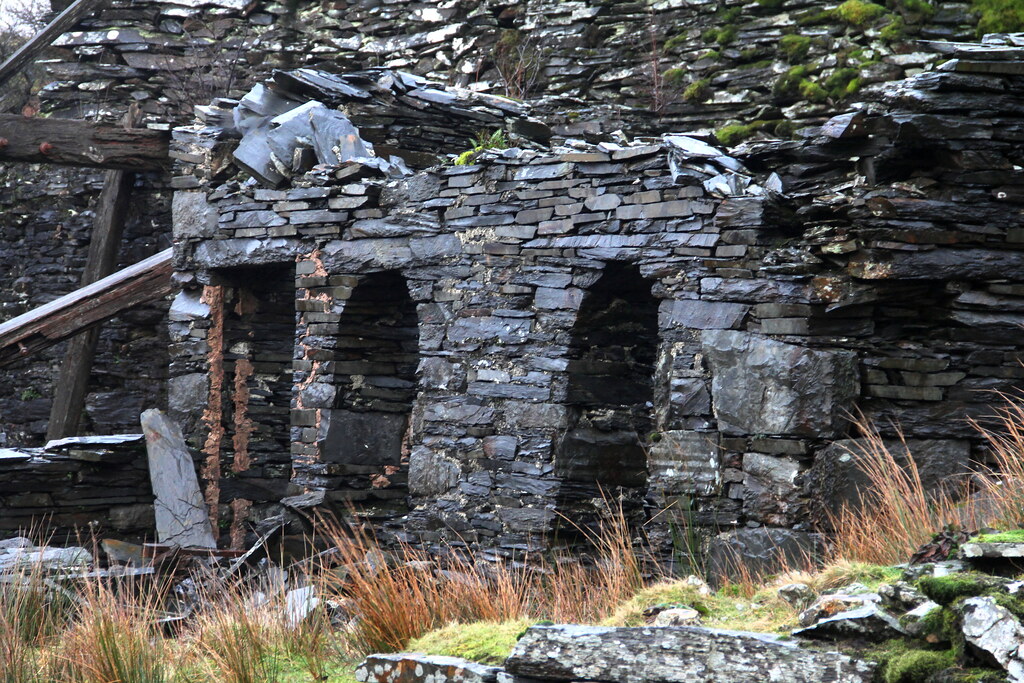
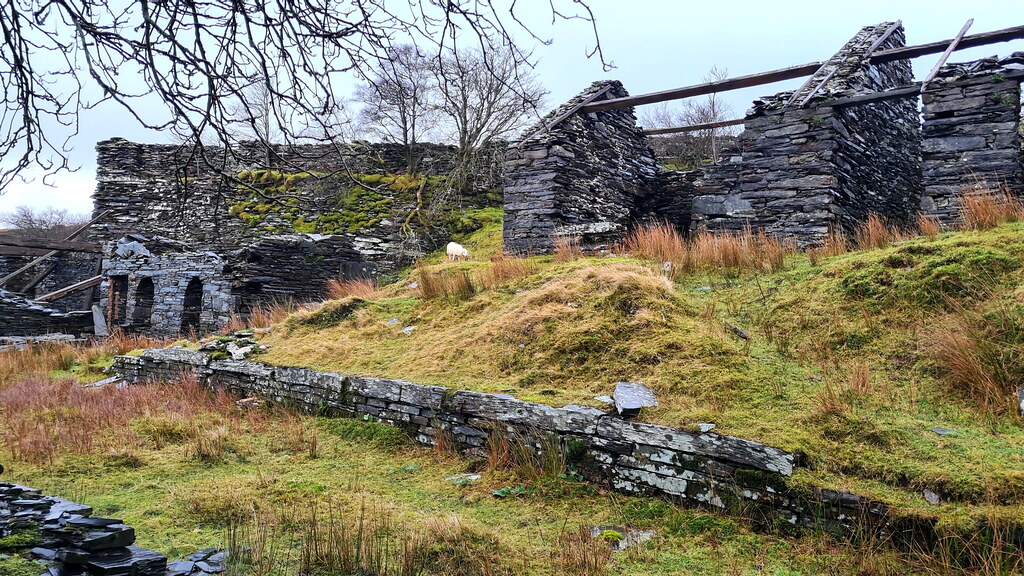
Oh bugger, secca have spotted me:
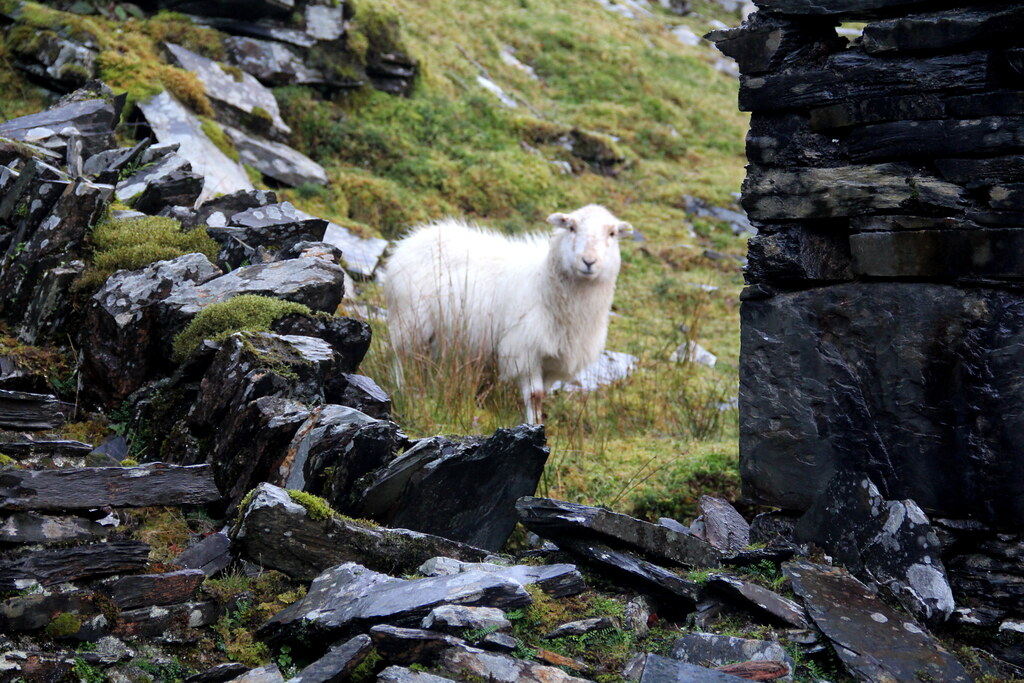
Looking through the door of a building in the cutting to the quarry (E):

On to the quarry itself (F):
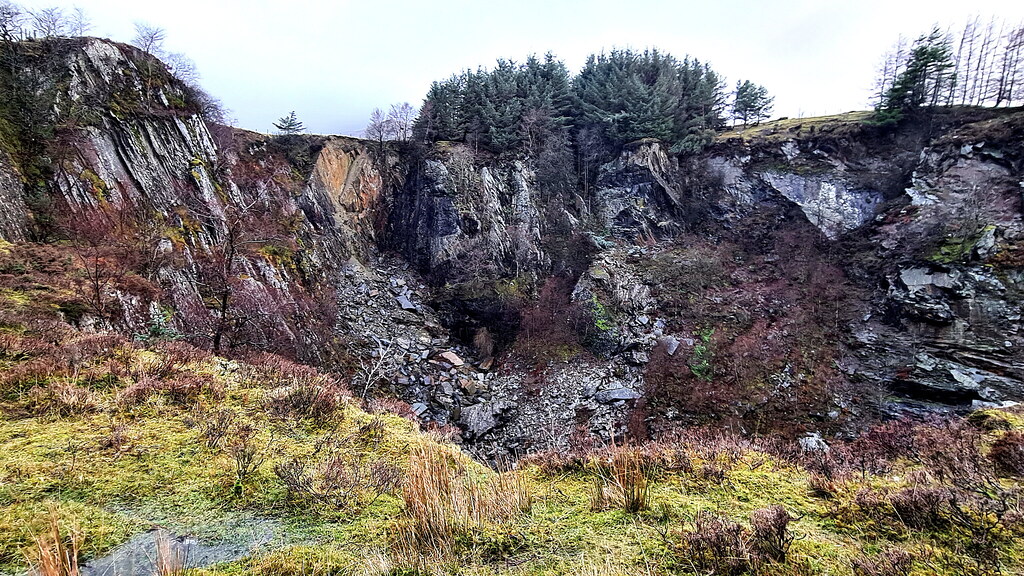
It was VERY windy so didn’t want to get too close to the edge!
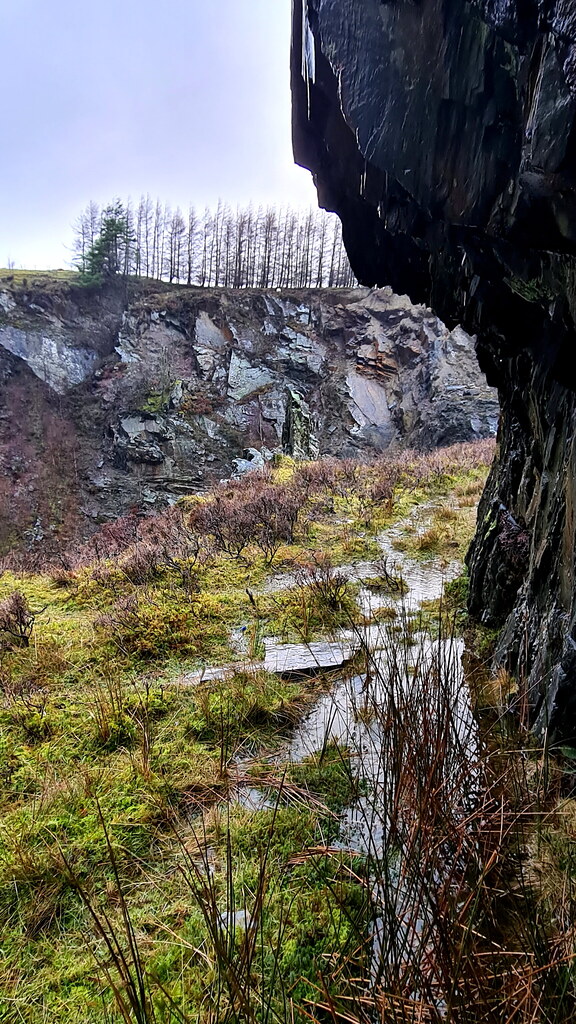
The eastern face of the pit is quite shear and very deep. The western face, however, is more eroded and still contains the balance tank for the original incline.
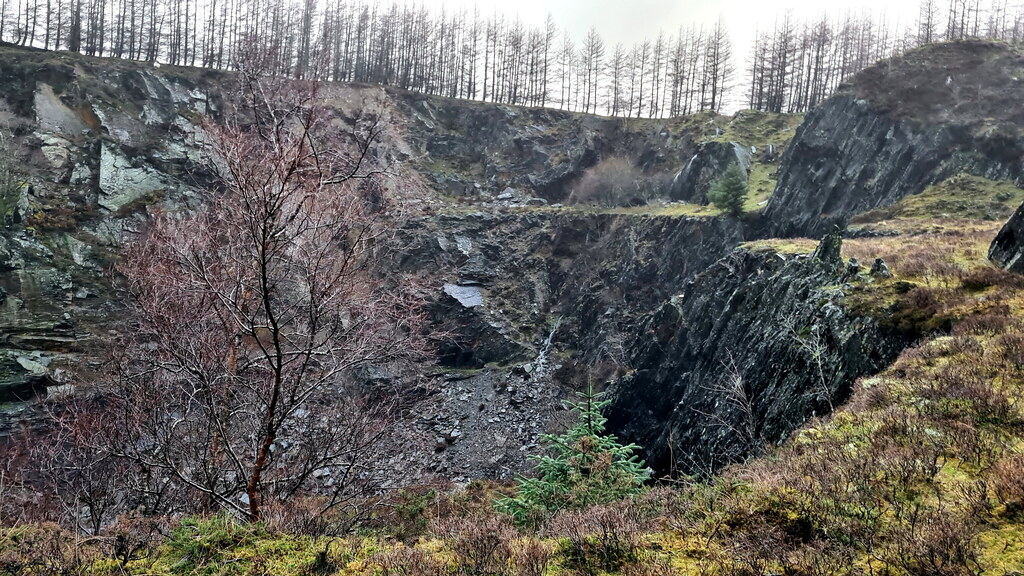
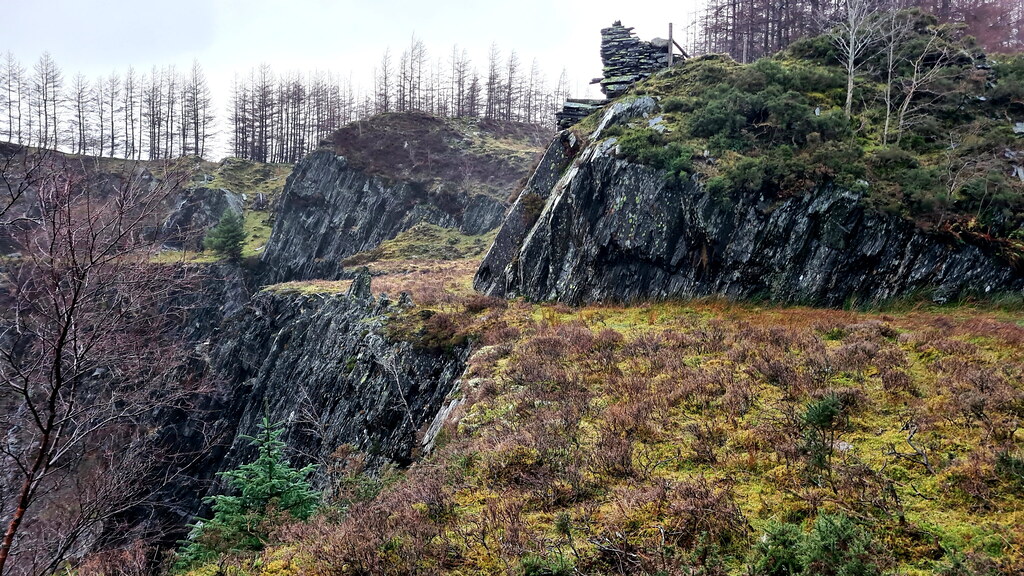
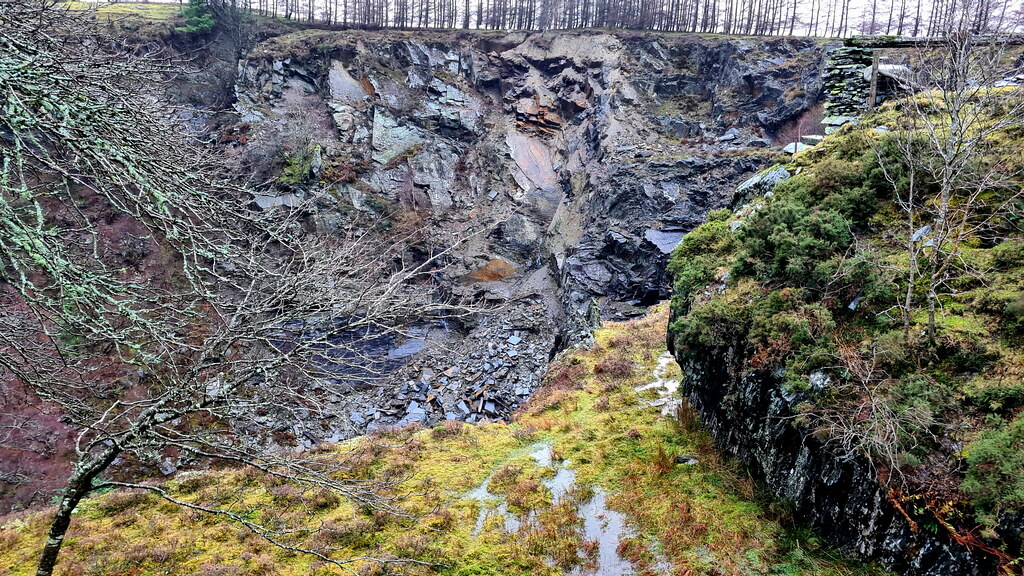
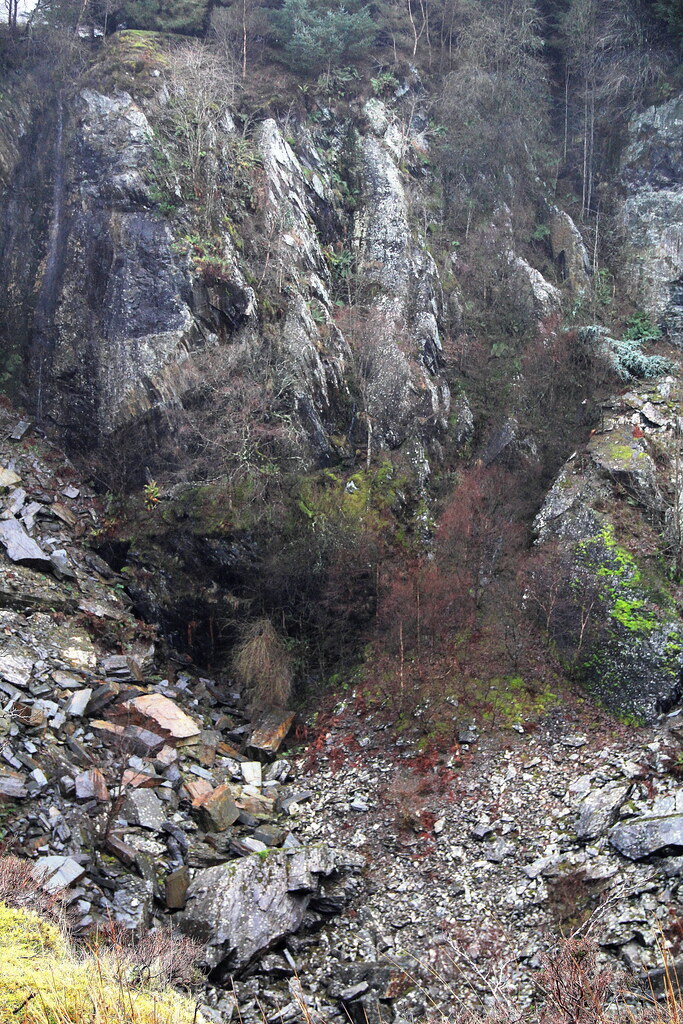
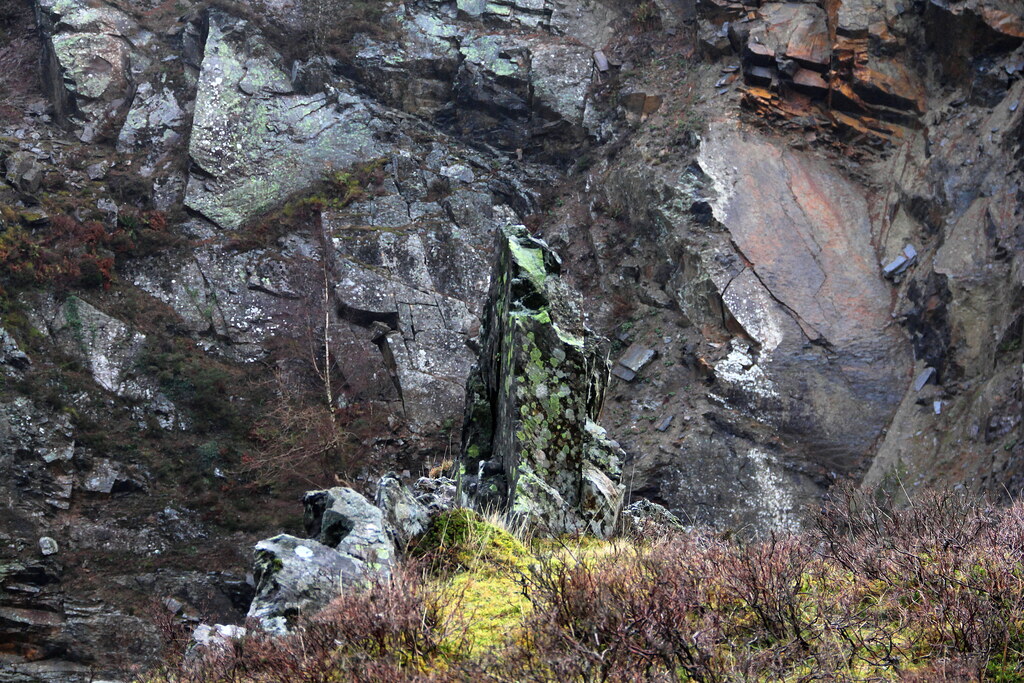
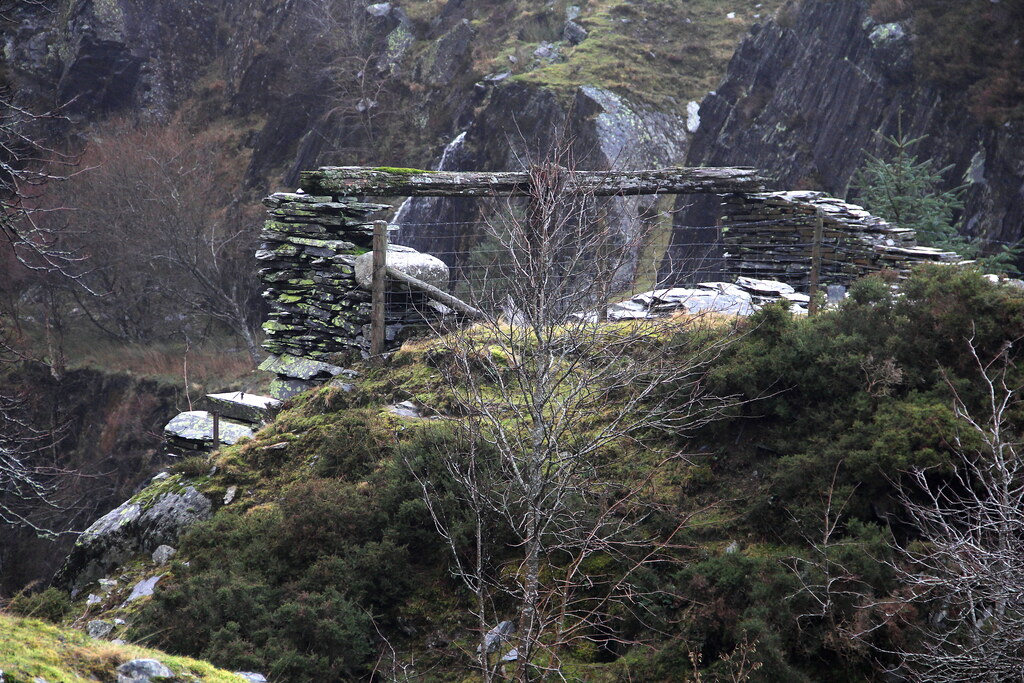
Above the quarry is a second water wheel:
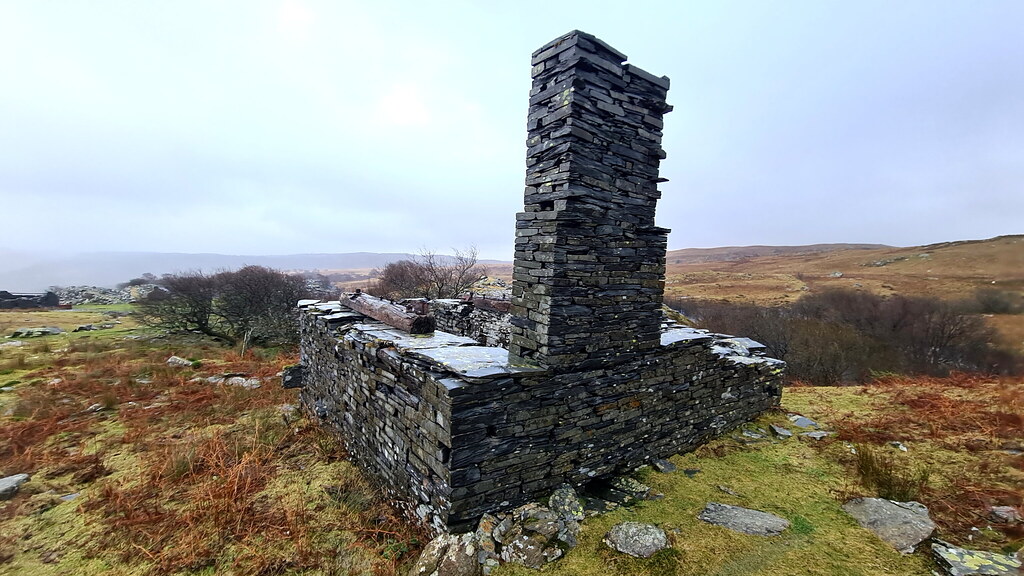
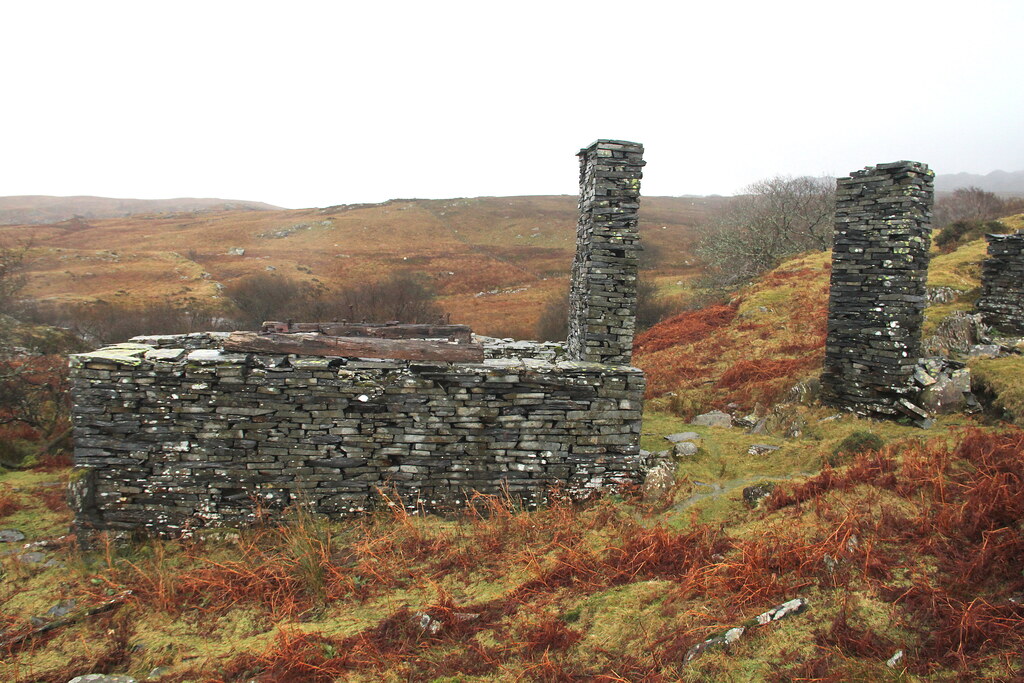
Some of the remnants of an anchoring points of the haulage system:
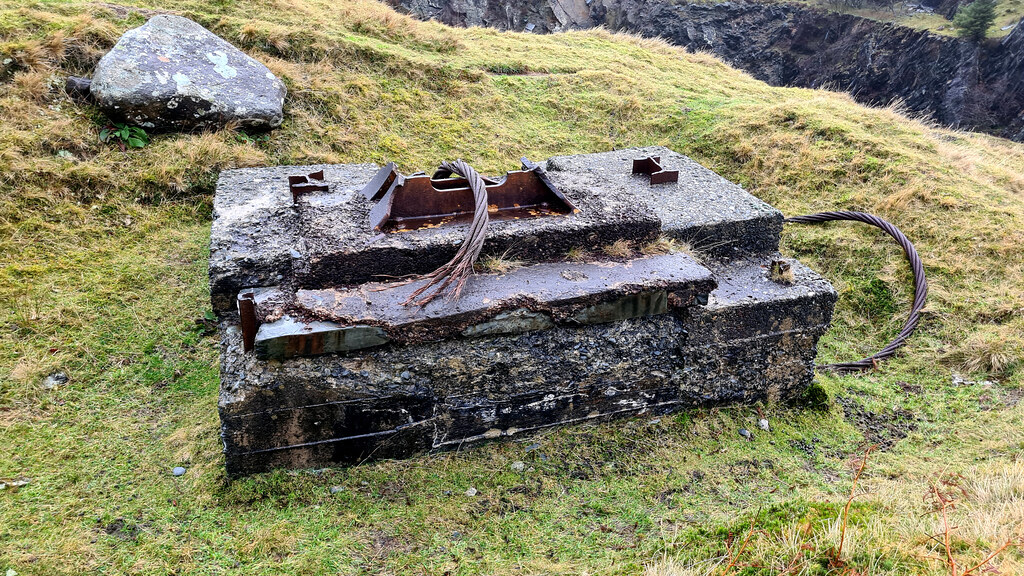
Some of the old rusting winch wire:
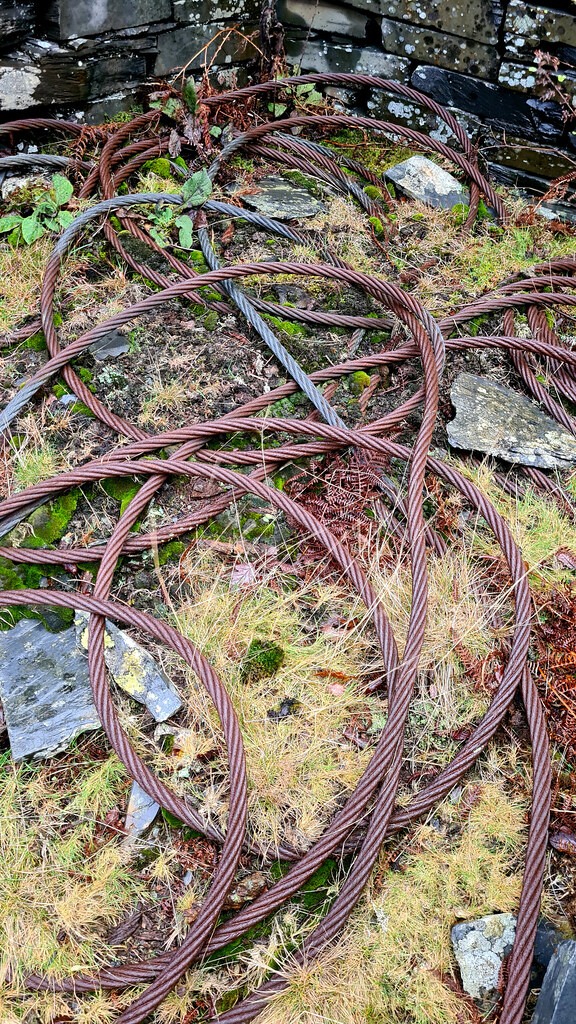
And, finally, looking back over the mill:
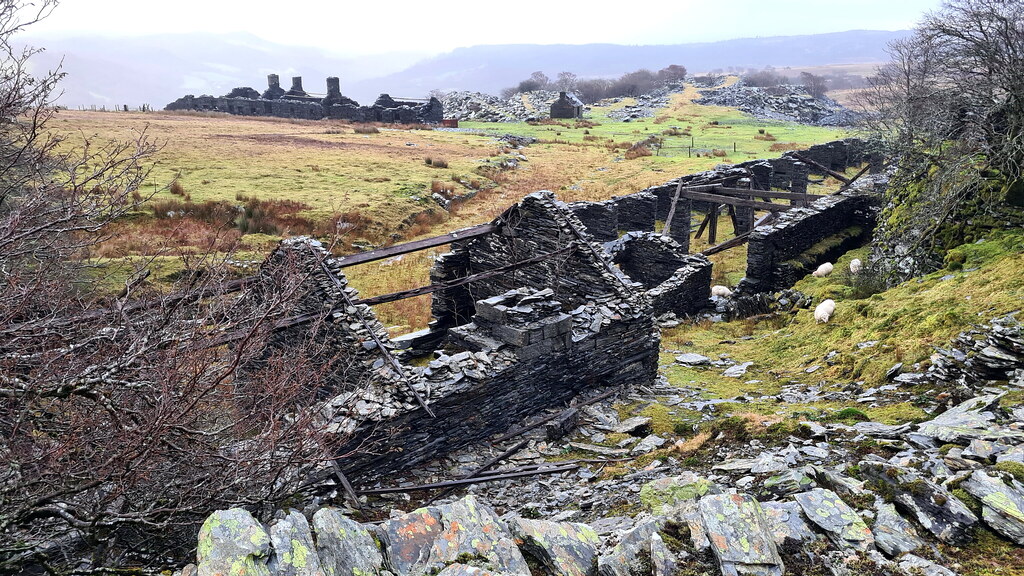
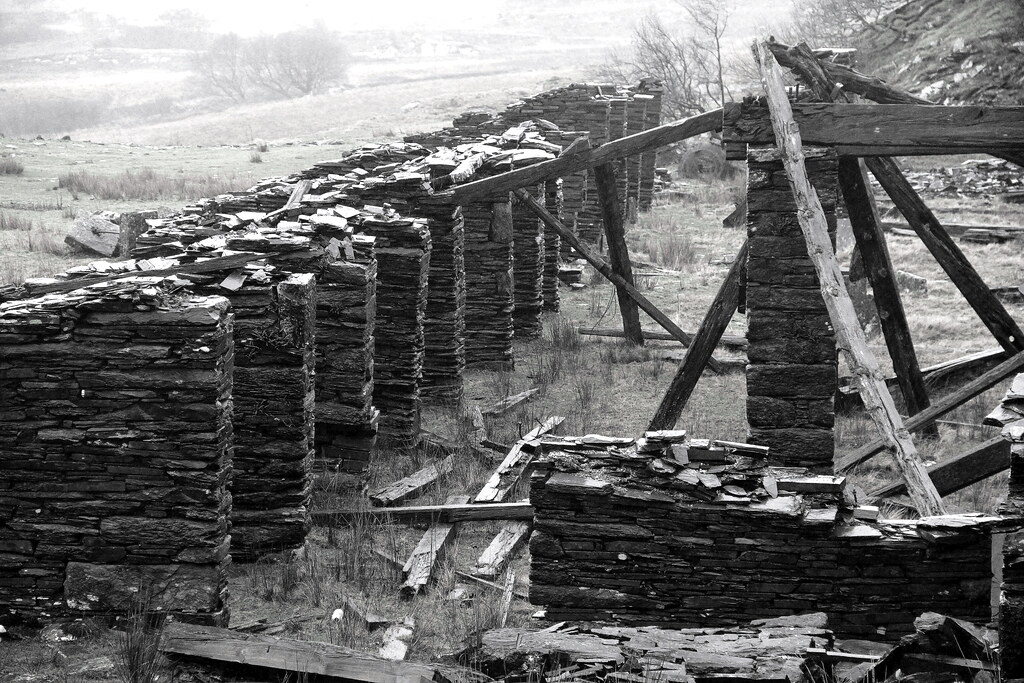
Located south-east of Capel Curig, North Wales, Rhos Quarry was a large quarry pit worked for slate. It opened in the 1860s and made extensive use of waterpower. The slate was trammed via a short tunnel, but this was later opened out as a cutting to the nearby mill area. The water-powered haulage system used included an impressive 30-foot water wheel. Additionally, there was an 18-foot water wheel at the mill which, most likely, would have been used to supplement the larger wheel when the mill was expanded to nearly double its initial floor space. A drainage tunnel allowed the use of a water balance while providing a ready exit for waste. This was developed into a platform with wheel-pit, with the intention building a mill at a lower level to avoid up-haulage at some point in the future.
Annotated Old O/S map detail of the quarry:

And the 30-foot waterwheel behind the main mill building:
 by HughieDW, on Flickr
by HughieDW, on FlickrIn 1935, the railed water balance was replaced with a chain incline. Powered by a water wheel running off the main mill wheel supply, some considered it more primitive than those installed in the 1860s. The mill itself housed contained 22 Greaves saws, a planer, and some mechanical dressers in the "waliau" (open-fronted workspaces). Locomotive power was used in the mill area via a De Winton engine which was operational from the 1880s up until around 1930, followed by two diesels (one a 1934 Ruston & Hornsby).
In terms of output, in 1882 45 men produced 1,285 tons of slate. In 1938 52 men were employed, before the quarry finally closed in the 1950s. Much of the quarry and its associated buildings still remain, including the mill building and associated structures and some of the water balance structure, though the incline has been quarried away.
2. The Explore
Nothing spectacular here, but interesting all the same. Think it is the first time it has been reported on here. There’s quite a bit remaining and although the buildings have started to fall down, you can get a real feel for how the quarry was laid out and how operated.
So, one very windy December morn I set of for the quarry. I parked just off the A5 and started the long steep ascent up to the quarry along a fairly well marked out footpath. The main issue was the wind and rain blowing straight into my face. Even when I’d arrived it was hard to take shelter from the wind as nothing appeared to be in the leeward side of the gale that was blowing. Ended up having an enjoyable hour or so at the quarry. Ventured into the upper reaches of the quarry only and didn’t get too close to the edge given just how windy it was! Overall, a really interesting and enjoyable little wander.
3. The Pictures
The first thing that comes into view is the lower water wheel pit (A) that was built but never used:

Continuing to walk along the raised exit tramway you come to a row of barracks/cottages (B):




The nearby waste tips:

Another nearby quarry building:



Looking over to the mill (D):

And to the rear of the mill:


East of the mill is this neat stone channel that runs from the mill’s tail race to the southern edge of the tip:

At the end is a second, smaller water wheel pit:

Back up to the mill:


One of the many rotting roof beams:

This looks like an engine mounting block:

Defying gravity:


On the quarry side of the mill is this building which was, most likely, the quarrymen’s caban:



Oh bugger, secca have spotted me:

Looking through the door of a building in the cutting to the quarry (E):

On to the quarry itself (F):

It was VERY windy so didn’t want to get too close to the edge!

The eastern face of the pit is quite shear and very deep. The western face, however, is more eroded and still contains the balance tank for the original incline.






Above the quarry is a second water wheel:


Some of the remnants of an anchoring points of the haulage system:

Some of the old rusting winch wire:

And, finally, looking back over the mill:





